| | | OFFLINE | | Post: 22.443
Post: 5.068 | Registrato il: 28/08/2005
Registrato il: 20/01/2009 | Administratore | Utente Master | |
|
 GENERAL AUDIENCE TODAY
GENERAL AUDIENCE TODAY
Catechesis on St. Therese of Lisieux (1873-1897)
Doctor of the Church


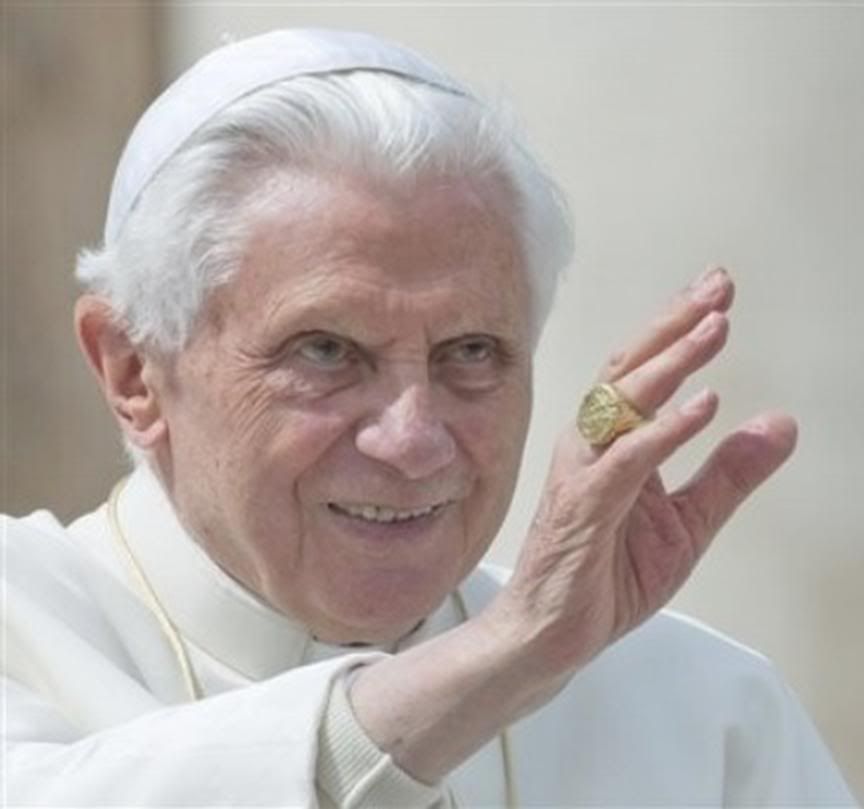
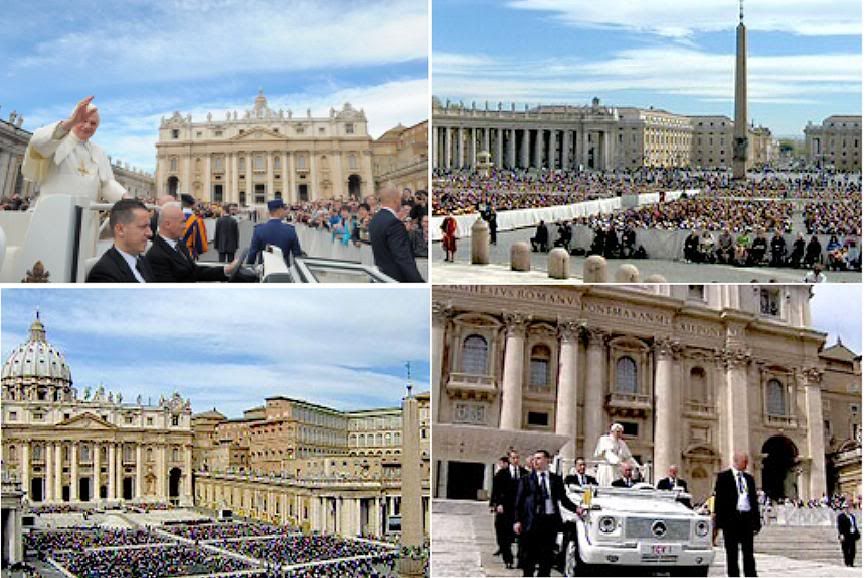
With this catechesis today, the Holy Father has completed his presentation of the 33 Doctors of the Church - saints recognized by the Church for the outstanding importance and quality of their teachings to the life of the Church. Most of them he had introduced in earlier catechetical cycles on the great figures in Church history after the Apostles - from the 4th-century Fathers of the Church, through the great medieval saints and teachers.
in his latest catechetical cycle, he presented the eight remaining Doctors, starting with the saints of the Counter-Reformation to St. Alphonsus Liguori and now, St Therese of Lisieux. Here is how he synthesized today's lesson in English:
 Our catechesis today deals with Saint Theresa of Lisieux, the young Carmelite nun whose teaching of the “little way” of holiness has been so influential in our time.
Our catechesis today deals with Saint Theresa of Lisieux, the young Carmelite nun whose teaching of the “little way” of holiness has been so influential in our time.
Born and raised in a devout French family, Theresa received permission to enter the Carmel of Lisieux at the tender age of fifteen.
Her name in religion – Sister Theresa of the Child Jesus and the Holy Face – expresses the heart of her spirituality, centred on the contemplation of God’s love revealed in the mysteries of the Incarnation and Redemption.
In imitation of Christ, Theresa sought to be little in all things and to seek the salvation of the world. Taken ill in her twenty-third year, she endured great physical suffering in union with the crucified Lord; she also experienced a painful testing of faith which she offered for the salvation of those who deny God.
By striving to embody God’s love in the smallest things of life, Theresa found her vocation to be “love in the heart of the Church”. May her example and prayers help us to follow “the little way of trust and love” in spiritual childhood, abandoning ourselves completely to the love of God and the good of souls”.
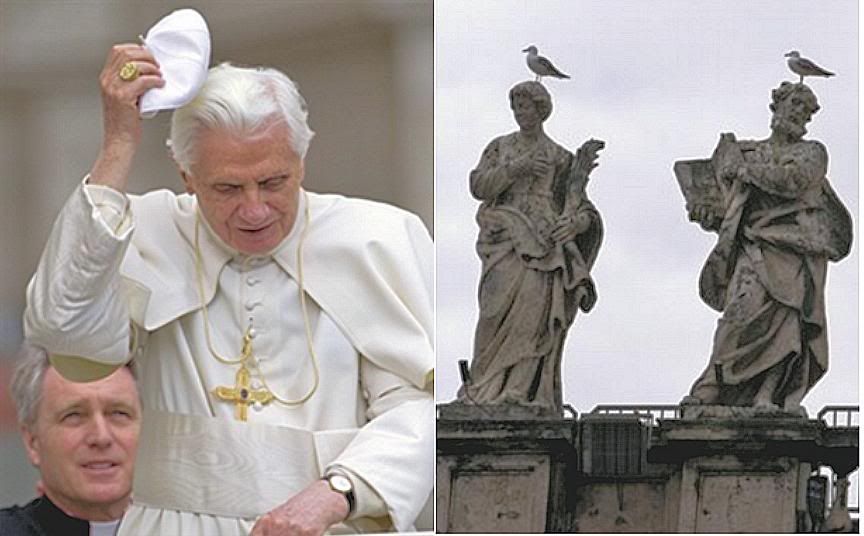
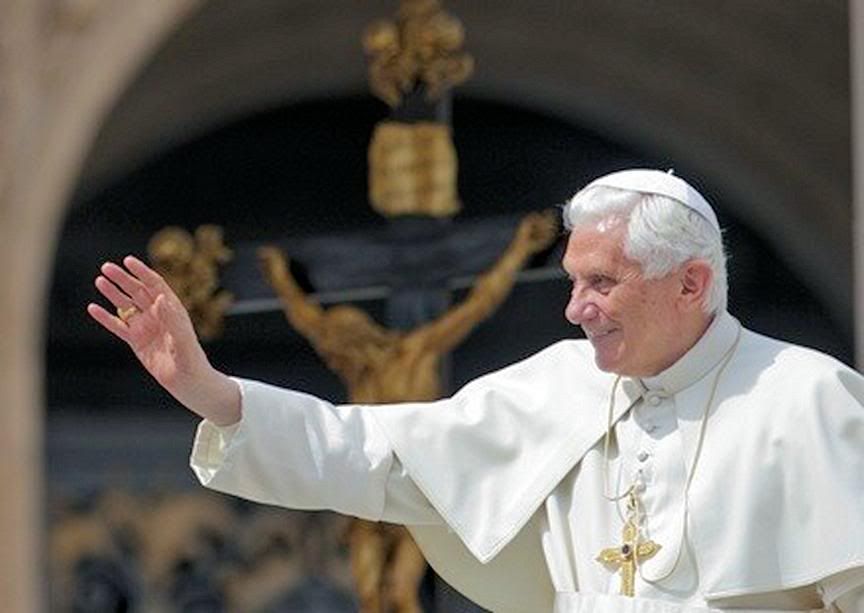
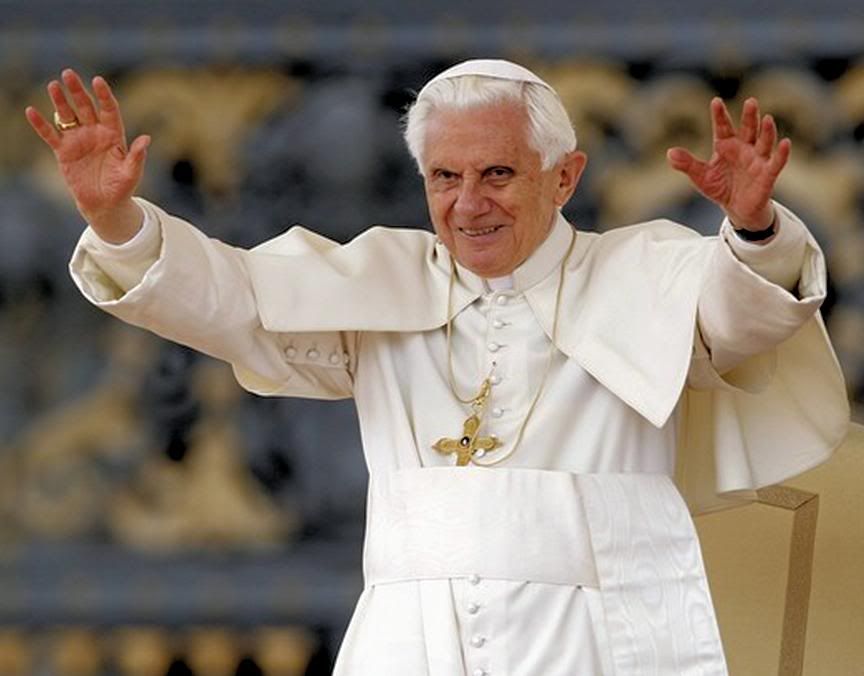

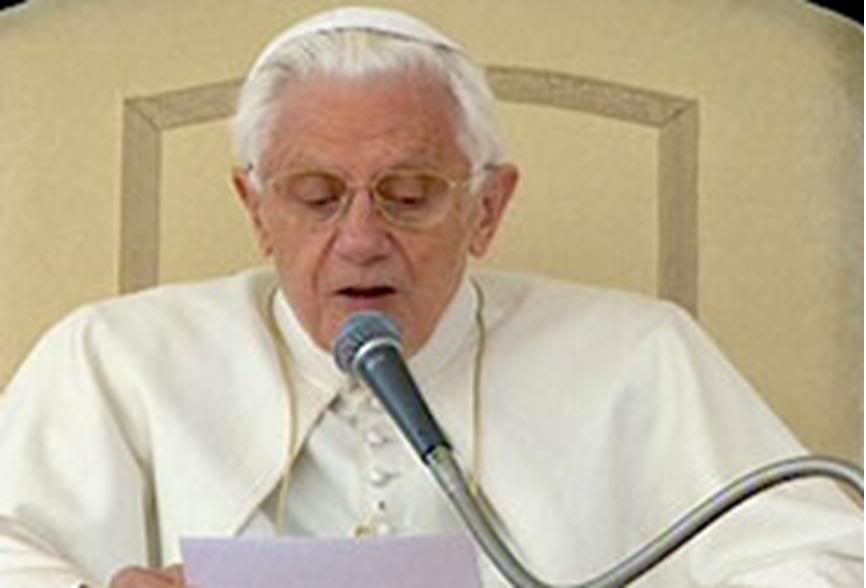 Here is a translation of the Holy Father's catechesis:
Here is a translation of the Holy Father's catechesis:
 Today, I wish to speak to you about St. Therese of Lisieux, Therese of the Child Jesus and the Holy Face, who lived in this world for only 24 years towards the end of the 19th century, leading a life that was very simple and hidden, but who, after her death and the publication of her writings, has become one of the best-known and best-loved of saints.
Today, I wish to speak to you about St. Therese of Lisieux, Therese of the Child Jesus and the Holy Face, who lived in this world for only 24 years towards the end of the 19th century, leading a life that was very simple and hidden, but who, after her death and the publication of her writings, has become one of the best-known and best-loved of saints.
The little Therese has never stopped helping simpler folk, the little ones, the poor and the suffering who pray to her, but also illuminates the Church with her profound spiritual doctrine, such that the Venerable John Paul II, in 1997, gave her the title Doctor of the Church, in addition to that of Patroness of Missions conferred on her by Pius XI in 1939.
My beloved predecessor called her 'an expert in the science of love' (Novo Millennio ineunte, 27). This knowledge, which sees all the truth of the faith resplendent in love, was expressed by Therese primarily in the story of her life, published one year after her death under the title The Story of a Soul.
It was a book that immediately had enormous success, and was translated into many languages and sold around the world. I invite you to rediscover this small but great treasure, this luminous commentary on a Gospel that was fully lived.
The Story of a Soul is, in fact, a marvelous story of love, told with such authenticity, simplicity and freshness that the reader can only be fascinated!
But what is this love that filled all of Therese's life, from infancy to her death? Dear friends, this Love has a Face, it has a Name, and it is Jesus! The saint speaks continually of Jesus. Let us then trace the major stages of her life to enter into the core of her doctrine.
Therese was born on January 2, 1873 in Alençon, a city in Normandy, France. She was the last child of Louis and Zelie Martin, exemplary spouses and parents who were beatified together on October 19, 2008. They had nine children, of whom four died very young. They were left with five daughters who all became nuns.
Therese, at age 4, was profoundly marked by the death of her mother (Ms A, 13r). The father moved his family to the city of Lisieux where the saint would live the rest of her brief life. Much later, Therese was afflicted with a severe neurological illness, but was healed by divine grace, which she herself called 'the smile of the Madonna' (ibid., 29v-30v). She then received her First Communion, which she lived intensely (ibid., 35r), placing the Eucharist in the center of her existence.
The 'Christmas grace' of 1886 marked the great turning point, that she called her 'complete conversion' (ibid., 44v-45r). In fact, she was cured of her infantile hypersensitivity and started her 'gigantic course'.
At age 14, Therese grew even closer, with great faith, to the Crucified Jesus, and took very much to hear the case of a criminal who was condemned to death but impenitent (ibid., 45v-46v).
"I wanted at any cost to keep him from falling into Hell", she wrote, with the certainty that her prayers would bring him in contact with the redeeming Blood of Jesus. It was her first and fundamental experience of spiritual maternity.
"I had so much faith in the Infinite Mercy of Jesus," she wrote. Like the Blessed Virgin Mary, the young Therese loved, believed and hoped with 'a mother's heart' (cfr PR 6/10r).
In November 1887, Therese went on a pilgrimage to Rome with her father and sister Celine (ibid., 55v-67r). For them, the peak moment was their audience with Pope Leo XIII, whom she requested for permission to enter the Carmel of Lisieux though she was only 15.
One year later, her desire was realized - she became a Carmelite "to save souls and pray for priests" (ibid., 69v). At the same time, however, the painful and humiliating mental illness of her father began. He suffered greatly, which led Therese to contemplate the Face of Jesus in his Passion (ibid., 71rv).
Thus her religious name - Sister Therese of the Child Jesus and the Holy Face - expresses the program of her whole life, in communion with the central mysteries of the Incarnation and the Redemption.
Her profession of vows, on the feast of Mary's Nativity on September 8, 1990, was for her a true spiritual matrimony in evangelical 'smallness', symbolized by the flower: "What a beautiful feast of Mary's Nativity to become the spouse of Jesus!", she wrote. "It was the Blessed Virgin who presented her little flower to the Baby Jesus" (ibid., 77r). For Therese, to be nun meant being the spouse of Jesus and mother of souls (cfr Ms B, 2v).
The same day, the saint wrote a prayer that indicates the entire orientation of her life: She asked Jesus for the gift of his infinite love, to be the littlest one, and above all, she asked for the salvation of all men: "Let no soul be damned today" (Pr 2).
Of great importance was her offeromg of Merciful Love, on the feast of the Most Holy Trinity in 1895 (Ms A, 83v-84r; Pr 6)- an offer that she immediately shared with her fellow nuns, since she was by now mistress of novices.
Ten years after her 'Christmas grace', in 1896, came her "Easter grace', which opened the last period of her life, with the start of her passion in profound union with the Passion of Jesus.
It was the suffering of the body, with the illness that would lead her to death with great suffering, but above all, it was a passion of the soul, with a most sorrowful trial of her faith (Ms C, 4v-7v).
Alongside Mary at the foot of the Cross, Therese lived her faith most heroically, as a light in a soul invaded by darkness. The Carmelite nun felt that she was experiencing this great trial for the salvatio.n of all atheists in the modern world, whom she called 'brothers'
She experienced fraternal love even more intensely (8r-33v): towards the sisters of her community, towards two spiritual brothers who were missionaries, towards priests and towards all men, especially those who were most distant. She truly became a 'universal sister'.
Her loving and smiling charity was the expression of the profound joy whose secret she reveals to us: "Jesus, my joy is loving you". (P 45/7). In the context of her suffering, experiencing the greatest love in the smallest things of daily life, the saint fulfilled her vocation to be Love in the heart of the Church (cfr Ms B, 3v).
Therese died on the evening of September 30, 1897, saying the simple words, "My God, I love you", looking at the Crucifix that she gripped in her hands. These last words of the saint are the key to her whole doctrine, of her interpretation of the Gospel.
The profession of love, expressed with her last breath, was like the continuing breath of her soul and the beating of her heart. The simple words, "Jesus, I love you" are at the center of all her writings.
The profession of love for Jesus immersed her in the Most Holy Trinity. She wrote, "Oh, you know, Divine Jesus, that I love you/ The Spirit of Love sets me ablaze with its fire/ It is in loving you that I draw close to the Father" (P 17/2).
Dear friends, we too, with St. Therese of the Child Jesus, should be able to repeat every day to the Lord that we want to live with love for him and for everyone, to learn from the school of saints how to love in an authentic and total way.
Therese was one of the 'little ones' of the Gospel who let themselves be led by God to the depth of his mystery. A guide for everyone, especially for those who, among the People of God, carry out the ministry of theologians.
With humility and charity, faith and hope, Therese enters continually into the heart of Sacred Scripture which encloses the mystery of Christ. Such a reading of the Bible, nourished by the science of love, is not in opposition to academic science.
Indeed, the science of the saints, of which she herself speaks on the last page of her Story of a Soul, is the highest science: "All the saints have understood it, especially those who fill the universe with the irradiation of their evangelical doctrine. Was it not perhaps from prayer that Saints Paul, Augustine, John of the Cross, Thomas Aquinas, Francis, Dominic and so many other illustrious friends of God that drew this divine science that has fascinated the greatest geniuses?" (Ms C, 36r).
Inseparable from the Gospel, the Eucharist was, for Therese, the Sacrament of Divine Love who had abased himself to the extreme in order to raise us up to him. In her last letter, on an image that represents the Child Jesus in a consecrated Host, the saint wrote these simple words: "I cannot fear a God who made himself so small for me!... I love him! Indeed, he is nothing other than Love and Mercy (LT 266).
In the Gospel, Therese discovers above all the mercy of Jesus, to the point of saying: "He has given me his infinite mercy through which I contemplate and adore all other divine perfections!... Therefore, everything seems to me to be radiant with love - Justice itself (perhaps more than any other) seems to me to be clothed in love" (Ms A, 84r).
And so she writes in the last lines of the Story of a Soul: "As soon as I look at the Holy Gospel, I immediately breathe the perfumes of the life of Jesus and I know which way to run to... I am headed not to the first place but to the last... Yes, I feel that even if I had all the sins that I could commit on my conscience, I would go, with my heart broken with repentance, to throw myself into the arms of Jesus, because I know how much he loves the prodigal child who returns to him" (Ms C, 36v-37r).
"Trust and love' are therefore the final points in her narrative of her life, two words which had illuminated her journey like two beacons in order that she could lead others on her same 'little way of trust and love', of spiritual infancy (cf Ms C, 2v-3r; LT 226).
Trust as that of the baby who abandons himself in the hands of God, inseparable from the strong and radical commitment of true love, which is the total gift of oneself, for always, as the saint says, contemplating Mary: "To love is to give everything, to give oneself" (Why I love you, O Mary. {P 54/22).
Thus, Therese shows everyone that Christian life consists in fully living the grace of Baptism in the total gift of oneself to the Love of the Father, in order to live like Christ, in the fire of the Holy Spirit, the same love that he has for everybody".
Pope appeals for Libya and Ivory Coast:
Violence and hatred are always a defeat
Adapted from

April 6, 2011
At the end of the General Audience, the Holy Father made yet another statement about continuing bloody conflicts in Africa:
I continue to follow the dramatic events that the dear people of Ivory Coast and Libya are experiencing in these days with great concern. I also hope that Cardinal Turkson, whom I sent as my envoy to Ivory Coast to express my solidarity, will soon be able to enter the country.
I pray for the victims and am close to all those who are suffering. Violence and hatred are always a defeat! For this I offer a new and urgent appeal to all involved to start the work of peace and dialogue and to avoid further bloodshed.
For the third time in as many weeks Pope Benedict XVI urged the international community to return to the path of dialogue and ensure the security and safety of the civilian populations of both countries.
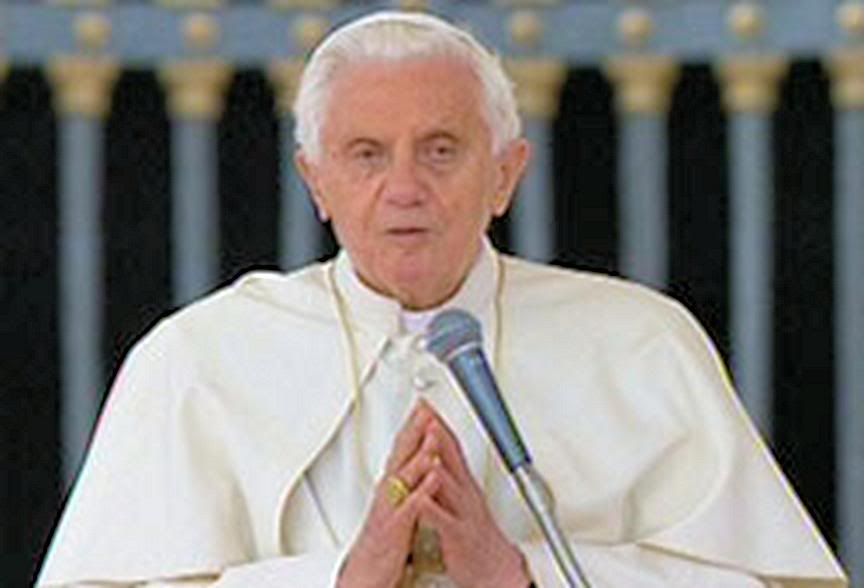

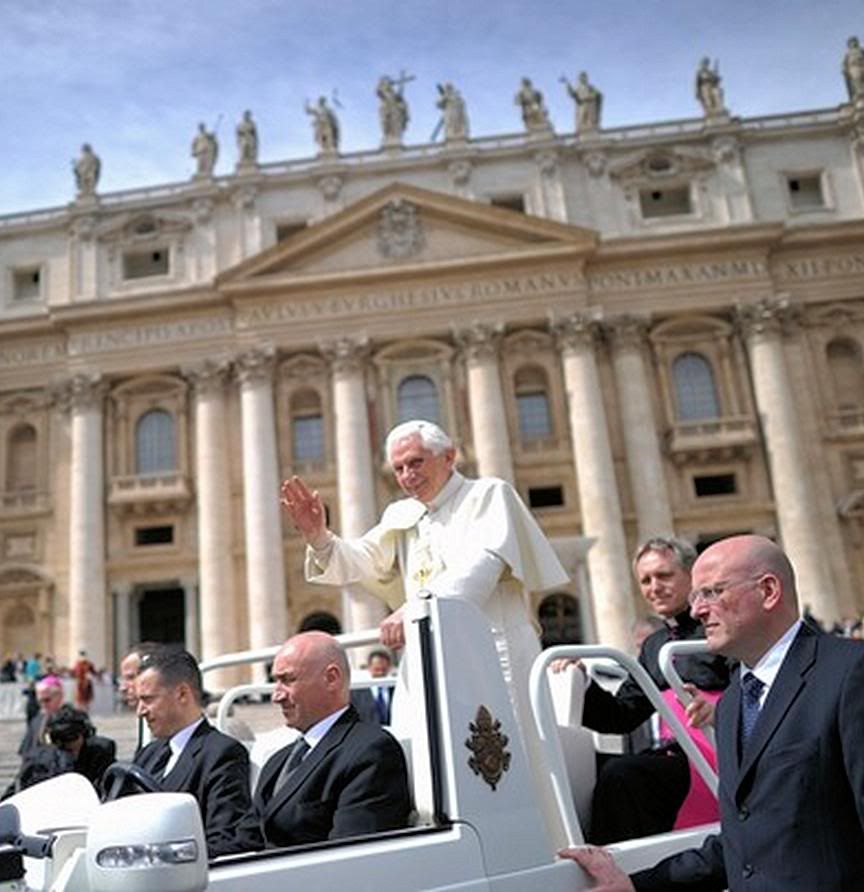

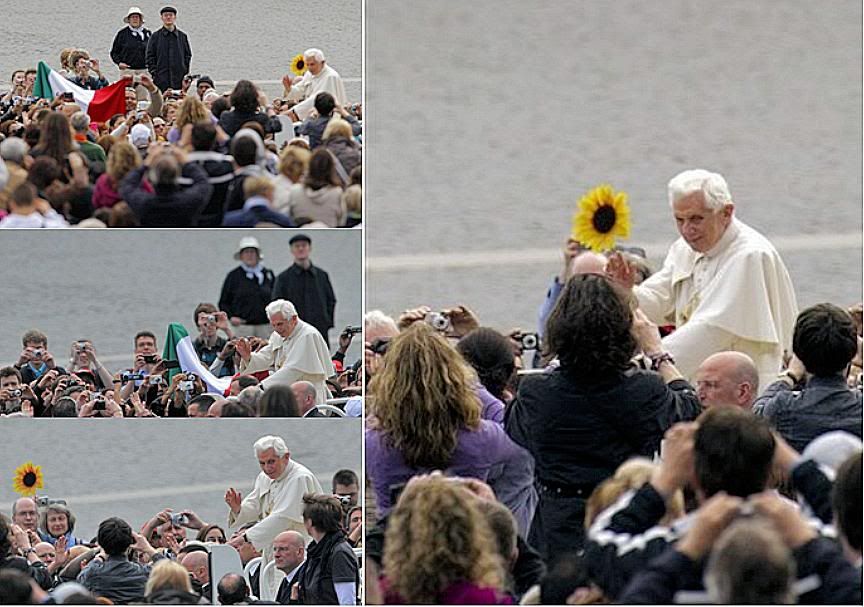

[Modificato da TERESA BENEDETTA 07/04/2011 02:34] |